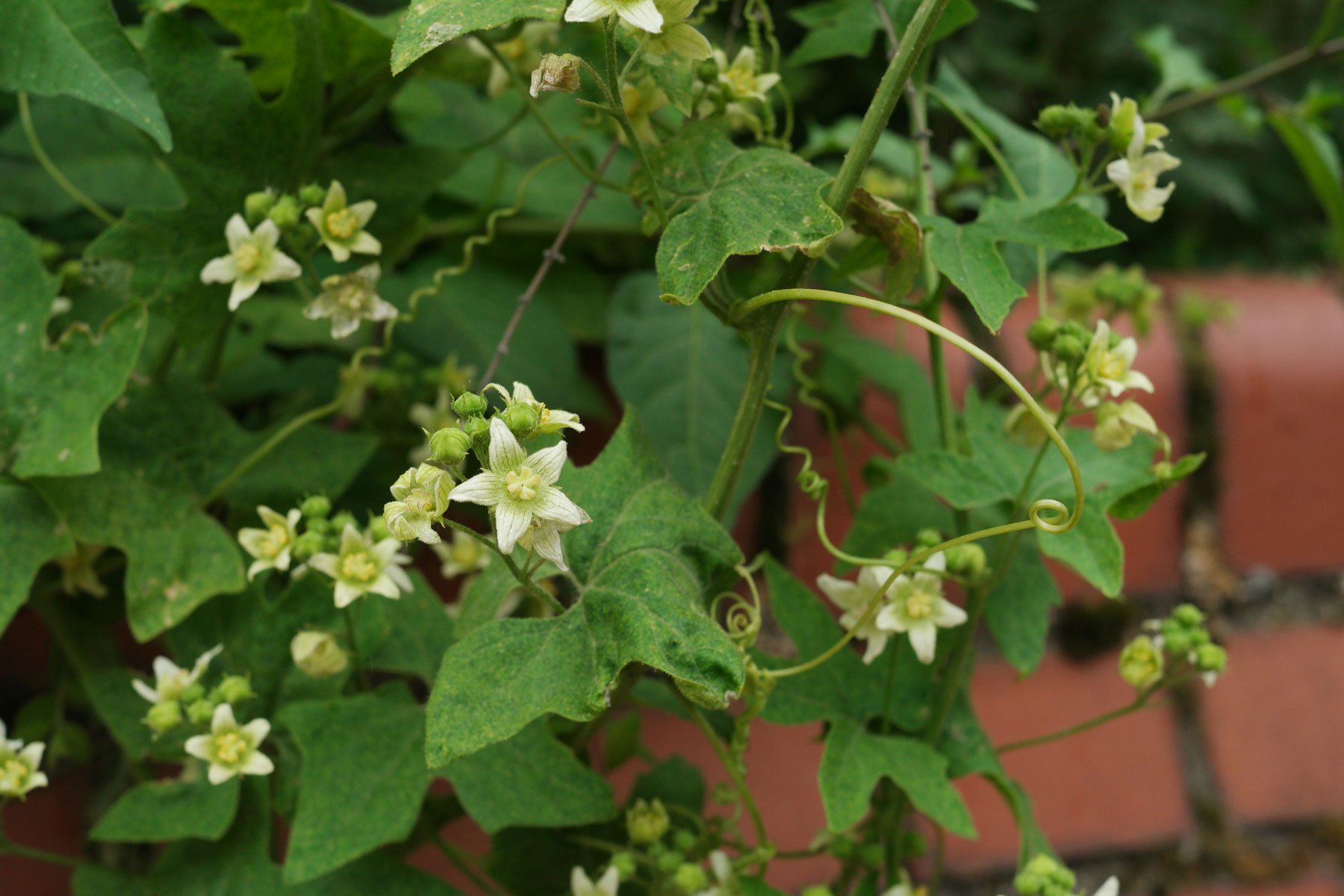Bryonia dioica
The White Bryony (Bryonia dioica) can be found near parks and gardens. It needs climbing aids in the form of hedges, bushes or fences. Its shoots can grow up to 3 metres long. Although it belongs to the cucurbit family, neither its turnip-shaped root nor the berries are edible.

The plant, also known as White Bryony, Red Bryony or English Mandrake, grows perennially. Its flowering period can last from April to September. Its area of distribution extends from Europe to North Africa and West Asia. Growing wild, it can be found in sparse forests. Here in the region, it is also often seen along roadsides, in car parks, railway embankments or construction sites, where some of the pictures shown here were taken.


The White Bryony as a habitat
Plants not only colonise habitats, they are habitats themselves, just as we humans and other animals are. Thus the bryonies – there are other species besides the White Bryony – form the habitat of the Bryony Ladybird. It differs from the other European ladybirds in that it does not eat aphids. Instead, it nibbles on the leaves of its host plants.



